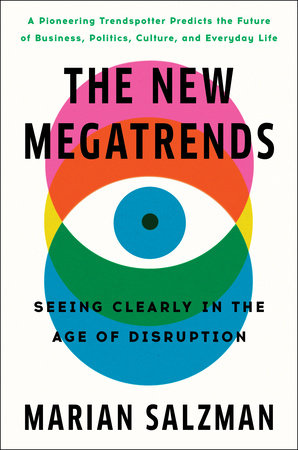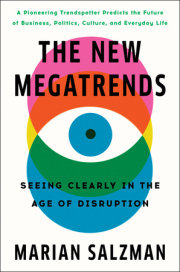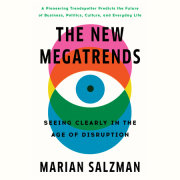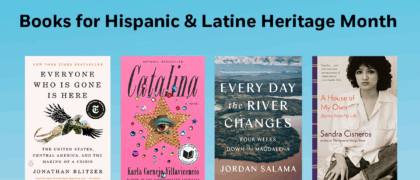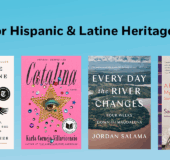The Big PictureLooking back over the past three centuries, one can imagine the enormous uncertainty that would have been kicked off by the Industrial Revolution, not to mention two world wars. Still, the chaos of today—even before the pandemic—seems somehow more pervasive and the contributing poisons (economic and racial injustices, inequity, nationalism, misogyny, extremism) more potent. Maybe that is because we are confronting the increasing probability that we have doomed our planet. Or maybe it’s because, thanks to digital technology, we are far more aware of every horror that occurs around the world, no matter how distant or unlikely to impact us directly.
Underlying all this unrest and unease are two conflicting megatrends I call the Great Divide and the Great Reboot.
The Great DividePolarization is part and parcel of today’s chaos. Even as new technologies make the world smaller, its citizens are growing further apart. In 2011, I wrote about people being “mad as hell”—a phenomenon I sensed mainly in the United States. Fast-forward ten years, and anger and frustration are erupting across the globe. In France, yellow vest protests over an unpopular fuel tax and immigration have given way to street clashes with police over a proposed vaccine passport. In Hong Kong, mass demonstrations have triggered increasingly hostile police responses and restrictive policies from the mainland. In Belarus, photographs of citizens being rounded up have evoked images of World War II. The list goes on—and we all know it will continue to expand.
Left versus right. Progressive versus conservative. Antifa versus Proud Boys. Young versus old. White versus nonwhite. Educated versus defiantly not. Male versus female. Feminist versus incel. Globocrat versus isolationist.
The inescapable truth is that sociopolitical, generational, and interpersonal divides are as much a part of modern society as are digital technologies. And intersections run like crosshatching between them, with overlaps among the various tribes.
The points of conflict are not always organic. There is profit (political and financial) to be made in manufacturing and exacerbating division. Public figures across the political spectrum understand the art of misdirection and the power of tribalism. Businesses, too, are mining profits from veins of conflict—in the process, creating commercial divides: Black Rifle Coffee Company and My Pillow on the right; Starbucks and Patagonia on the left. Our cash register receipts have become quasi-ballots.
At a time when we all face genuine existential threats, one might think people would come together to find solutions; instead, we focus on identifying convenient targets for our blame and condemnation. We live in an age of rage—an era of us versus them, writ large.
The Great RebootAs is ever the case, countertrends have formed to balance the forces of division that have emerged. We saw a hunger for community and for a more fulfilling and equitable approach to life gain traction over much of the past decade, but this countertrend has taken on increased urgency in the age of the pandemic. The related disruptions upturned our lives and gave many of us our first opportunity in years—maybe ever—to pause and deeply consider the big questions: Are we living our best lives? Are we contributing to society? Are our personal and family relationships what we want them to be? Is society moving in the right direction—and, if not, what needs to be done to course-correct?
Some would argue that this period of introspection and demand for change is fleeting—that people will slip back into life as usual as soon as the threat of the pandemic recedes. I disagree. I am convinced that the virus and the circumstances surrounding it—from the “Great Pause” to heightened awareness of low-income workers and the spotlight shone on the fundamental inequities of many economic systems—will have an enduring impact. Many workers are no longer willing to accept conditions they deemed normal prior to the pandemic—whether they be long commutes, abusive work conditions, or inadequate benefits. This deadly virus has shown people their worth and revealed that the way things are is not necessarily how they need to be. People also are questioning their life choices, from personal relationships to career aspirations and location preferences. Amid all the chaos, more of us are contributing to upheaval, but in a controlled, positive way. We are insisting on change—both personal and systemic—and we are doing so with a level of certainty and clarity that was not available to many of us pre-pandemic.
As I consider the forces gathering to counterbalance the rise of hate, intolerance, and polarization, I perceive several impactful shifts that will remain and grow stronger. Among them:
The rise of allyship: Even in the face of societal rage, more people will make an effort not just to coexist with others but to throw their full support behind those least like them. This is a trend with roots that extend well into the past, but it gained strength in 2020 as more people tuned in—even outside the United States—to issues of bias and inequity in the wake of George Floyd’s murder by a Minneapolis police officer. Though the initial burst of street demonstrations against racial injustices has subsided, nonmarginalized people will continue to seek opportunities to support the marginalized, including by shopping in their stores, promoting their causes, and finding ways large and small to counter institutionalized biases and discrimination.
From what and how to why: This pandemic has pushed individuals, businesses, and governments to consider with greater rigor what is “essential.” At its most basic level, this is a trend that encompasses the move toward more mindful consumption, downsizing, and minimalism, with more people rejecting excess. It extends beyond that, however, to incorporate the bigger picture of our personal and business choices. Why are we operating our businesses the way we are? What is the purpose of insisting workers be onsite five days a week? Is our salary structure geared toward motivating and retaining our best employees at all levels? Is the government’s tax structure supporting the greater good or primarily benefiting those at the top? People will insist on examining more closely why we live and work the way we do—and what options exist for change.
A pushback against untruths: Would you ever have anticipated the extent to which facts are now open to interpretation? The possibility that “alternative facts” and “fake news” would be embraced by large swaths of citizens in some countries? It is a situation worsened by social media and the misinformation it disseminates. In the United States, a study by NewsGuard found that social media users consumed twice as much news deemed “problematic, inaccurate, or suspicious” in 2020 as in 2019, and Pew Research Center found that 80 percent of Americans reported being exposed to false news reports about the virus in the early weeks of the pandemic. The social media giants are beginning to corral and remove misinformation and disinformation, but they are moving slowly and not always with great effect. As external pressures continue to mount and more AI-enabled solutions are developed, we will see progress. Ultimately, though, it will be up to users to rise up against untruths and demand accountability among those complicit in the spread of disinformation.
On the radar: By 2038, we will see far more proficient fact-checking in real time online thanks to crowdsourcing and AI—pop-up notices that contradict a page’s content, question a site’s bias, warn of potential scams, and recommend verified alternatives. Accusations of bias and censorship will abound.
An embrace of the authentic: This is the shift that may be the most far-reaching. Many people are desperately unhappy with their lives—and with the emptiness, artificiality, and vacuousness of modern life. We can see that in rising rates of depression, anxiety, alienation, and suicide, and we can see that in the rage so freely expressed both online and off. Happy, fulfilled people have little reason to lash out against others unless genuinely provoked, nor are they likely to derive satisfaction from operating as internet trolls. The Great Pause of the pandemic compelled many of us to confront the deficits in our lives. And it offered us a chance to reassess where we are against where we might prefer to be. The change that lies ahead will differ radically from person to person, but a common theme will be the retreat from the artificial to the real, from the digital to the natural, from the mindless to the mindful.
Arundhati Roy, author of
The Ministry of Utmost Happiness, beautifully described the choice we now face:
Historically, pandemics have forced humans to break with the past and imagine their world anew. This one is no different. It is a portal, a gateway between one world and the next. We can choose to walk through it, dragging the carcasses of our prejudice and hatred, our avarice, our data banks and dead ideas, our dead rivers and smoky skies behind us. Or we can walk through lightly, with little luggage, ready to imagine another world. And ready to fight for it.
The Great Divide or the Great Reboot? Which future will you champion?
Copyright © 2022 by Marian Salzman. All rights reserved. No part of this excerpt may be reproduced or reprinted without permission in writing from the publisher.

